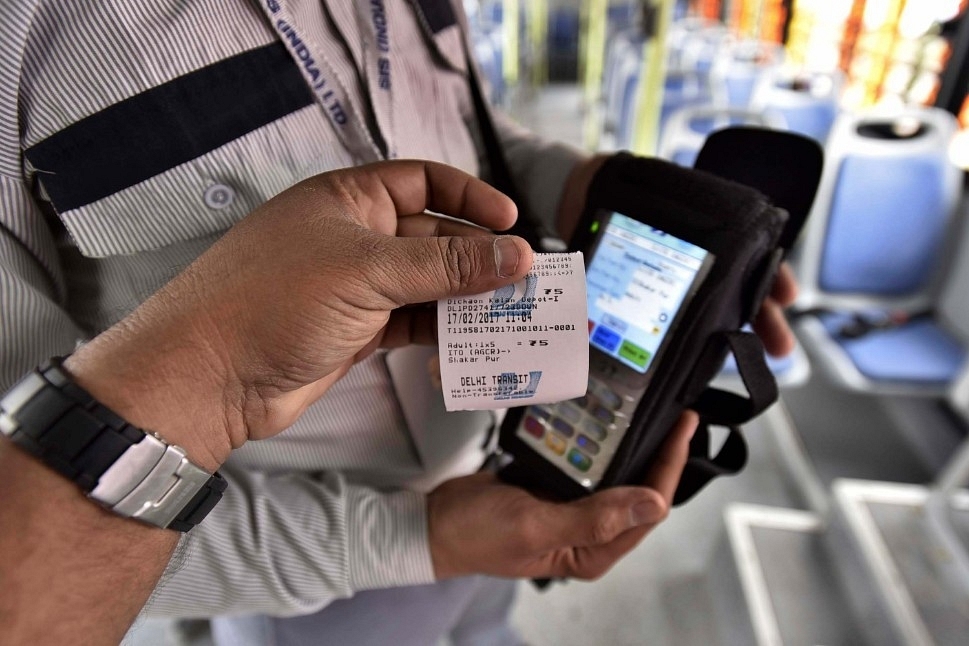Economy
DeMo's Real Success Is Reflected In Wide Adoption Of Digital Payments
- There are no two ways about it. DeMo made the transition to a digital economy less painful for India.

Big boost for digital payments system in India. (Raj K Raj/Hindustan Times via GettyImages)
The other day I was pleasantly surprised when an auto driver I had used for short-distance travel declined cash payment. He wanted me to pay by GPay. It was for a paltry sum of Rs 21, and I wondered why. He explained that he had to send money to his family in another state, and this was the fastest and quickest way to do so.
Nor was this an isolated incident. In Bengaluru, where I spend half my time, and also now in Thane, where I spend the other half, payments based on the QR Code and unified payments interface (UPI) are widely accepted. There is practically no shop in my locality which does not accept digital payments, and even street-hawkers are willing to display Paytm signs and accept digital payments. Digital penetration is wide and deep.
While anecdotes and personal observations cannot substitute for hard data, for once the data also seem to support the claim of widespread adoption of digital payments. In July, as states started easing Covid-related movement and shopping restrictions, UPI transactions crossed 3 billion to touch 3.24 billion valued at over Rs 6 lakh crore.
The RBI-DPI, to quote a press note put out in January this year, includes five parameters to measure the deepening penetration of digital payments. These “parameters are — (i) payment enablers (weight 25 per cent), (ii) payment infrastructure — demand-side factors (10 per cent), (iii) payment infrastructure — supply-side factors (15 per cent), (iv) payment performance (45 per cent) and (v) consumer centricity (5 per cent). Each of these parameters have sub-parameters which, in turn, consist of various measurable indicators.”
Under the payment enablers parameter, for example, the six sub-parameters are a mix of commercial and policy-driven initiatives: Internet and mobile penetration, Aadhaar coverage, bank accounts, merchant establishments and number of participants.
On the payment infrastructure side (demand) are sub-parameters like debit and credit cards, money wallets, customers registered for Internet and mobile banking, and FastTags for toll payments. On the supply side of infrastructure, we have the usual suspects — bank branches, business correspondents, ATMs, point-of-sale terminals, QR codes, and intermediaries (see chart for other sub-parameters).
There is little doubt that most of these sub-parameters were policy-driven initiatives and would not have happened with governmental regulatory push. For example, Jan Dhan and Aadhaar, and the abolition of service charges for most forms of digital payments barring ATM cash withdrawals.
We cannot applaud this progress without bringing in the roles played by two major disruptions in 2016: one is the much-criticised initiative of demonetisation; the other is Reliance Jio, which drove data costs down to the lowest in the world and dramatically expanded the scope for digital consumption and payments.
From today’s vantage view, we can surely say that DeMo was the wrong instrument to use for rooting out black money, and it also needlessly robbed the cash-dependent businesses of growth momentum for years.
If DeMo disruption was the key to making digital payments succeed, the very fact that we were able to navigate harsh lockdowns and supply disruptions last year and this year due to Covid proves its enduring value.
Consider a counter-factual: how much more would Covid’s economic damage have been if transactions were still physical, based on cash and cheques? Consider the likelihood of billions of payments being made in physical mode, bringing with it the risk of virus-contaminated notes circulating in the economy. Consider what would have been the impact if the millions of mandays created by MGNREGA to help migrant labour returning to their homes had to be paid for in cash.
There are no two ways about it. DeMo made the transition to a digital economy less painful for India. It may actually have helped minimise the impact of financial transactions on Covid transmission by making contactless payments ubiquitous.
Introducing ElectionsHQ + 50 Ground Reports Project
The 2024 elections might seem easy to guess, but there are some important questions that shouldn't be missed.
Do freebies still sway voters? Do people prioritise infrastructure when voting? How will Punjab vote?
The answers to these questions provide great insights into where we, as a country, are headed in the years to come.
Swarajya is starting a project with an aim to do 50 solid ground stories and a smart commentary service on WhatsApp, a one-of-a-kind. We'd love your support during this election season.
Click below to contribute.
Latest